

15 Summer Signature Experience in the Cities of Yogya–Solo–Semarang
We all know that Central Java is a part of Indonesia that has so many histories and exotic sites to visit. And to make your summer experience complete, you will need to come and
see these sites as you make your round in Central Java. Here are some of the most beautiful places
that you cannot miss in the cities of Yogya, Solo, and Semarang:
1 | Pasar Beringharjo

Beringharjo Market was named by Sultan Hamengkubuwono IX, which has a meaning as a symbol of hope, that the place where Banyan tree (Bering) was grown would bring wealth (Harjo) to the people surround. Before the year 1758, the location itself was a forest of Banyan trees.
But soon after the NgayogyakartaHadiningrat Kingdom stands tall, the area then used as a place of trading and economic activities by the people of Yogyakarta as well as the border cities people.
And now that the tourists have specified this location as a satisfying purchasing place, you can reach this place very easily. There are many options to get to Beringharjo Market from the stations and even directly from the airport.
So, if you’re looking for a traditional batik and antique souvenir, Indonesian authentic herbs and spices, local sweets and pastries, this is the right place you need to go to. But don’t forget to bargain before you purchase your things!
2 | Museum Sonobudoyo

Back in 1919, Sonobudyo Museum was a foundation that was engaged in the fields of Javanese, Balinese, Madura and Lombok culture, and was known by the name of Java Institute, and was located in Surakarta.
But then in 1931, with the final decision of the congress led by Ir. Th. Karsten P.H.W Sitsen, Koeperberg, Java Instittut set up to established a museum in Yogyakarta. And by the end of 1974, Sonobudoyo Museum was finally given its full authority to the central government/ministry of education and culture.
Since then, if you visit the place, you can see ten kinds of the museum’s collection; Geology, Biology, Ethnography, Archeology,Numismatica, History, Filologia, Ceramics, Fine Arts and Technology collections. Take a visit and be amazed by the mesmerizing objects there.
3 | Keraton Yogyakarta

Keratan Yogyakarta, or you can call it The Palace, was found in 1755 by Prince Mangkubumi, as well known as Sultan Hamengkubuwono I, located in the center of the city between Winogo River and Code River.
Built in a very elegant Javanese architecture, The Palace stretches out from north to the south. The front yard is called alun-alun utara (the North Square), and the backyard is called alun-alun selatan (theSouth Square). On the west side of the palace, there is Water Castle that was built in 1758.
Also, the visitors can watch a life-size diorama of wedding ceremonies on the palace meeting hall, performed by puppets. A number of batik workshops and sets of Javanese musical instruments, antiques and heirlooms have made the palace of Yogyakarta worth to visit!
4 | Taman Sari Water Castle

Built in 1765 for Sultan Hamengkubuwono I, Taman Sari (Perfumed Garden) is the site of a former royal garden of the Sultanate of Yogyakarta. Lies over 12,600 acres, it includes a series of water gardens, pools, artificial lakes, as well as a collection of 59 buildings.
And even though Taman Sari has suffered from the natural disaster, neglected and urban encroachment, the complex remains as one of the most important national monument, and one of the best surviving examples of eighteenth-century Javanese architecture and landscape design. Plan your trip now and make sure to go here while you’re in Yogyakarta!
5 | Alun – Alun Selatan
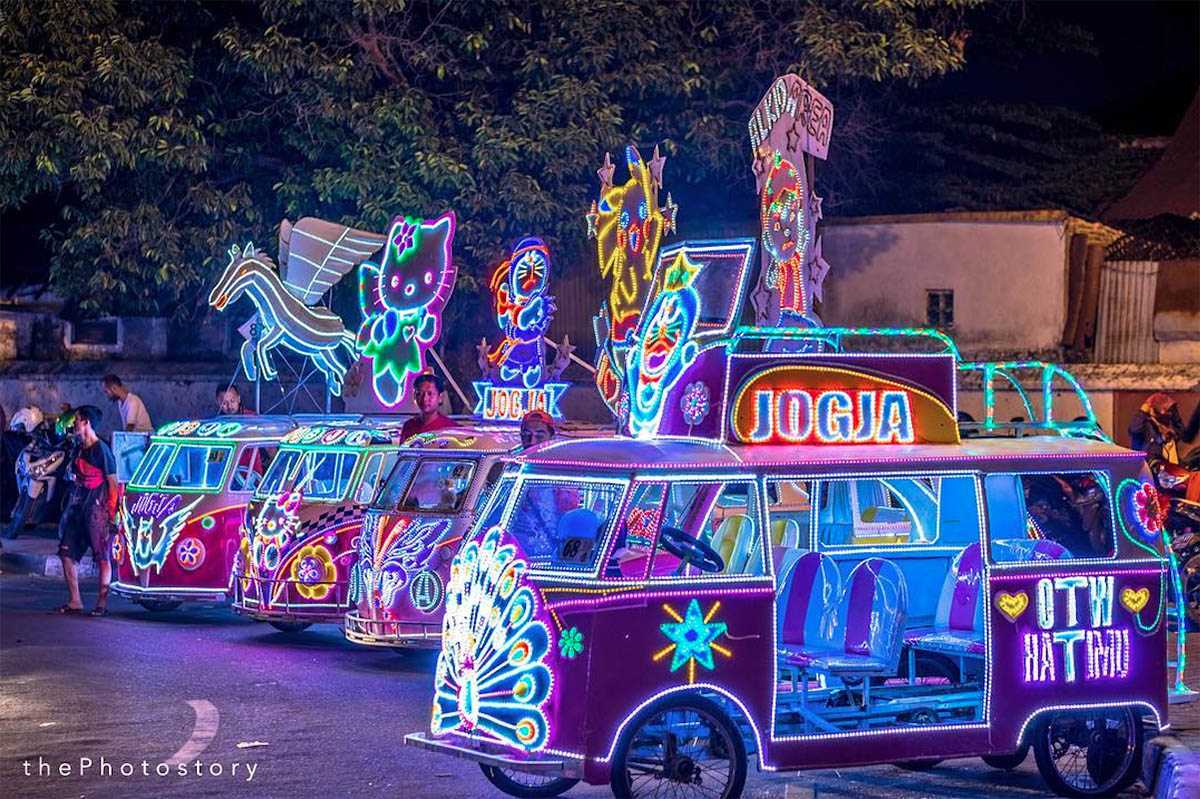
Image by andrianagung
Known as Alun – AlunKidul, this site is the southern part of Keraton Yogyakarta. Today, this site has become a public space for people to hang around. By the beginning of the night, you will find so many activities here.
From street vendors to teenagers with their bicycle attraction, modified ornamental three wheelers, sports activity, even romantic dinner under the banyan tree in the center of the park. There was also an elephant cage inside, where children and tourists used to ride one for fun.
Though now it is closed, the terms of “elephant cage” area are still used by the people around. And if you want to visit this place, you’d better to come down at dusk. So you can see the beautiful yellow sun crawling out off the horizon from the park with the people around starts to gather in the crowd.
6 | Ngarsopuro Night Market
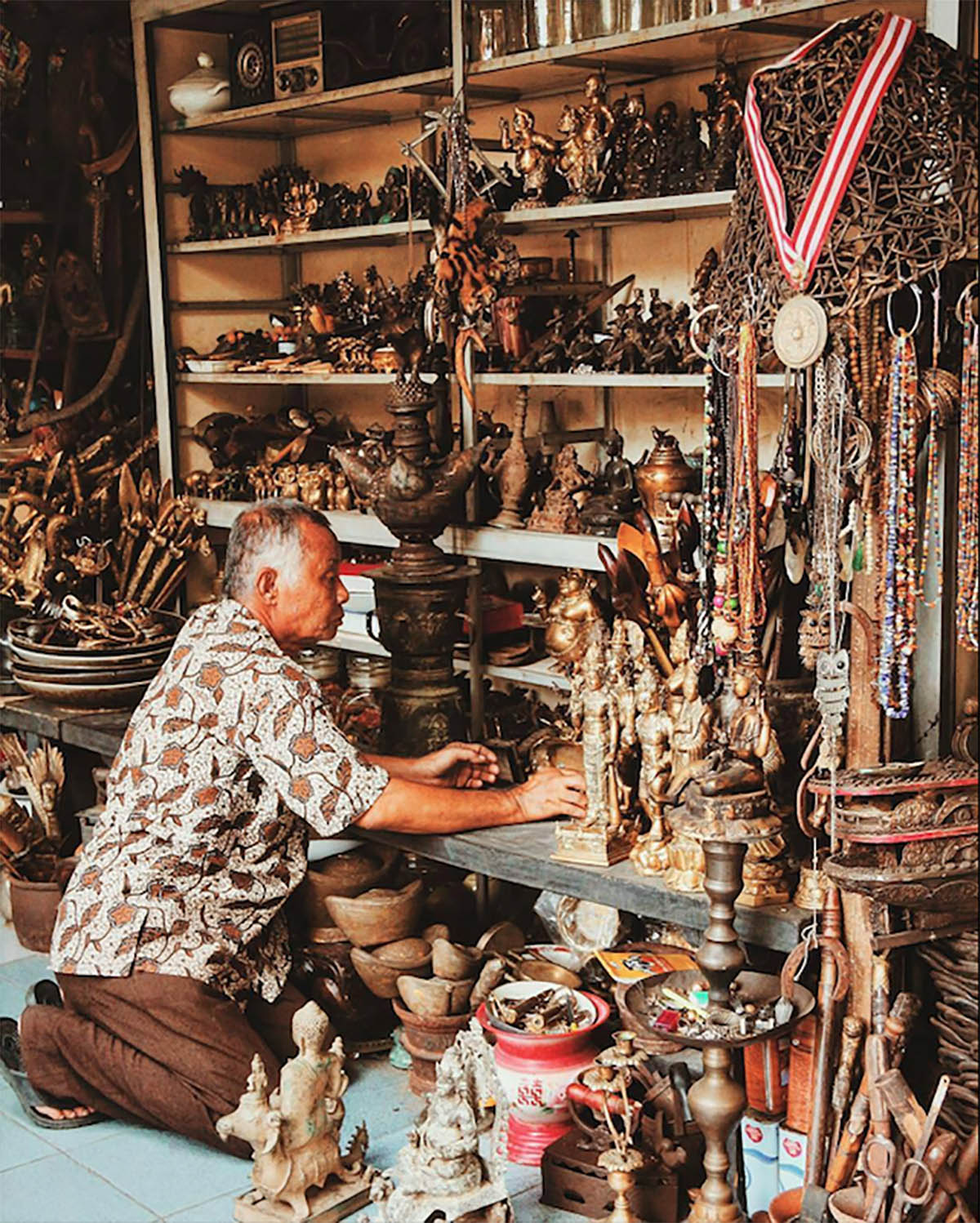
Image by soloindonesia
It was February 16, 2009, when President JokoWidodowas still the Mayor of Solo back in the day, first transformed the place into a night market. Since then, every Saturday and Sunday night, the area of Jalan Diponegoro, in front of PuraMangkunegaran, is used for Ngarsopuro night market.
This place has always been so crowded as it is located in the heart of the city. Not only used as a trading place, in any occasion, this two-nights market also used as an exhibition place for local micro-entrepreneurs showing off their creations such as batik Solo, ornamentals, fashion stuffs, and traditional kids’ toys.
It exactly is the right place to buy traditional authentic souvenirs. Come over and enjoy the environs!
7 | Keraton Surakarta

This is the official palace of Kesunanan Surakarta, which is situated in the city of Surakarta, Central Java. It is built by SusuhunanPakubuwana II in the year of 1744 as a replacement of Kartasura Palace that was destroyed because of GegerPecinan (civil war) in 1743.
This palace itself then divided into some areas; Alun-alunLor/North complex, SasanaSumewa complex, SitiHinggilLor/North complex, KamandunganLor/North complex, Sri Manganti complex, Kedaton complex, Kamagangan complex, Sri MangantiKidul/South complex, KamandunganKidul/South complex, SitiHinggilKidul/South complex and also Alun-alunKidul/South complex.
With each and every area of the sites has its own exotic buildings and unique architecture. Even more interesting, you can also see the traditional ceremony, sacred dances, music, and insignia ritual here. It is a place with a very rich cultural history. Please come by and have an educational trip experience!
8 | Pasar Klewer

Klewer Market in Solo is the busiest textile market in Java, selling all kinds of fabrics. Predominantly batik, it also has traditional fabrics such as lurik (hand woven striped cotton cloth) and tenun ikat. There are hundreds of shops in this area.
Besides the clothes, they also sell traditional and local jewelry, leather puppets, basketry, tortoise-shell accessories, trinkets, brassware and other decorative items, and all kinds of antiques are local specialties. Even though the price is less expensive, you will still need to bargain to get even the cheaper price for the things you buy.
And not to worry, traditional fabrics from Central Java is well known for its top quality. You can visit and check it out yourself to prove it!
9 | Kampung Batik Kauman
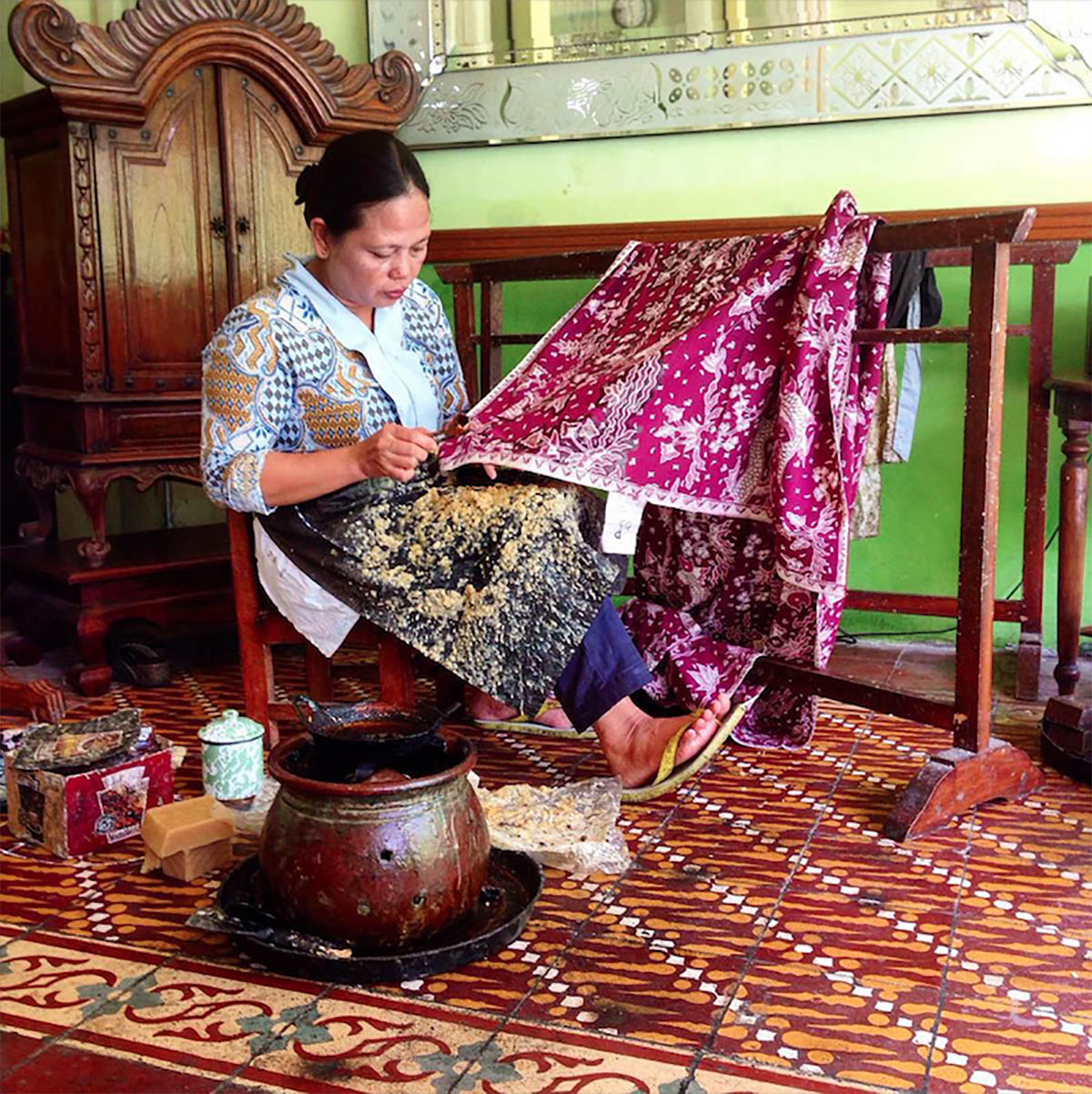
Image by brendanatasya
One of the oldest batik art center in the city of Solo. Located in between Jalan Slamet Riyadi and Jalan Rajiman, you can reach here using the public transportation called Batik Solo Trans from Balapan Station. Back in the days, this place was civilized by Kesunanan Keraton people, who preserved the old tradition by doing the batik arts.
Up until today, there are three kinds of batik kauman’s main products; Classic Batik (Batik Tulis), Stamp Batik and the combination between the two. There are more than 30 batik industries inside the area, which offers you different kinds and motives of batik, so you won’t need to worry about running out of options.
The good thing is, you can always interact with the artist directly and see how it was made. But make sure to just take a walk if you visit this place because it is situated in the small alley.
10 | Museum Manusia Purba Sangiran
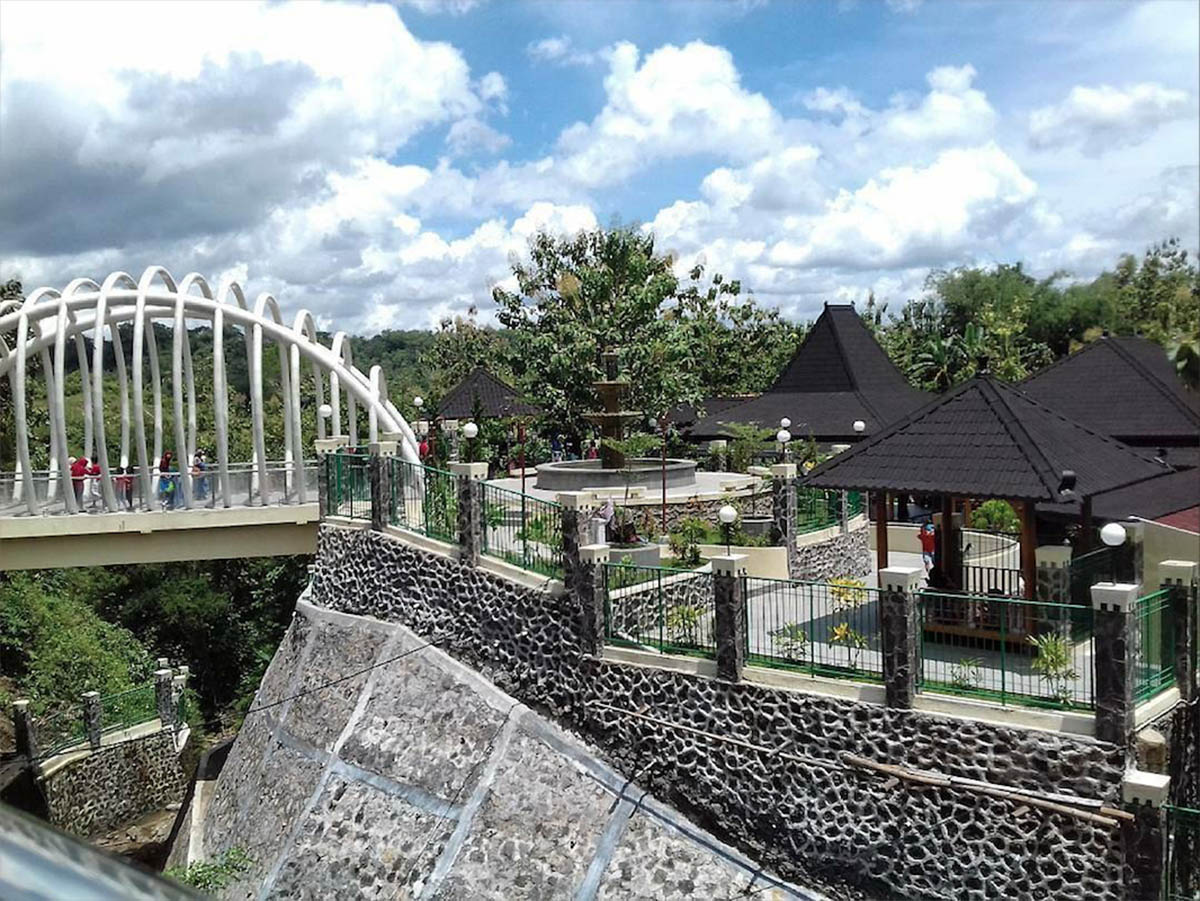
Image by museumsangiran
One of the most interesting tourist-object in a district of Sragen is Sangiran Museum. Located in KubahSangiran area, Mount Lawu, Solo.
This is the most complete site of ancient people fossils. It is then developed for the growth of education in many kinds of study, especially in research of anthropology, archeology, biology, paleoanthropology, geology, and tourism. Here you can also learn about the life of the people in the prehistoric era.
Because this site is equipped with fossils of ancient human, flora and fauna, and prehistoric cultural instruments, along with a stratigraphy explanation. Opens from Tuesday to Sunday, it is your chance to get to know your ancestor better!
11 | Brown Canyon

Brown Canyon is one of the best tourism sites that attract lots of photography lovers to come by.
Located in the area of RowosariMetesehTembalang, Semarang. It is a challenge for tourists to get to this panoramic beauty of nature, because its distance from the central crowds of the city, and you will need to fight against thick dust and containers.
Despite its fury road, it is still accessible to get there by riding a motorbike, though you have to cover your eyes and wear a masker. This place is actually a mining area. So if you want to go there, you’d better come after the working hours.
12 | Taman Puri Maerokoco
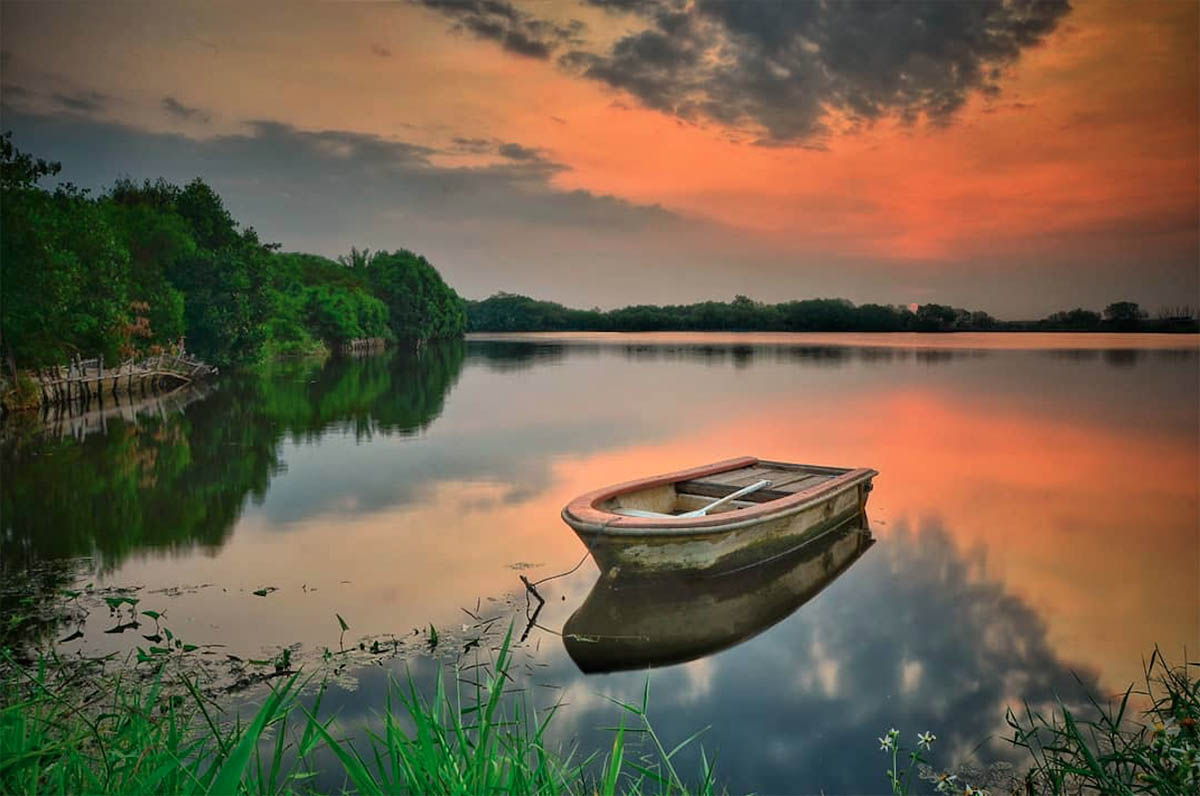
Image by sidiqnurseto
Often called as “Taman Mini Jawa Tengah Indah”, Taman Puri Maerokoco is a tourism site that is situated in Jalan Yos Sudarso, Semarang. As the miniature park of Central Java, it includes all kinds of the traditional houses from 35 different districts and cities in Central Java.
And inside the houses, you will find handicrafts and industry products from each region. Besides traditional houses, this park also has another entertainment facilities such as water bike, mini boats and a small train for the visitors to enjoy.
Open for public form eight in the morning until six o’clock in the evening. You can easily reach this destination by public transportations or even your own vehicle.
13 | Klenteng Sam Po Kong

Known as Gedung Batu Temple by the locals, this building is the oldest Chinese temple in Semarang, Central Java. Originally established by the Chinese Muslim explorer, Zheng He (as known as Sanbao), but was reportedly destroyed in 1704, collapsing under a landslide. And in October 1724, the temple was completely renovated. Spreads over 3.2 hectares, the Sam Po Kong complex includes five temples in a mixed Chinese and Javanese architectural style.
The temples are Sam Poo Kong (the oldest), Tho Tee Kong, KyaiJuruMudi Temple, KyaiJungkar Temple and KyaiCundrikBumi Temple, with the last additional worship site, MbahKyaiTumpeng. There is a carnival every Lunar year on the 30th day of the sixth month, the anniversary of Zheng He’s arrival in Semarang, Chinese-Indonesians parade statue of Zheng He, Lauw In, and ThioKe from TayKakSie to Sam Poo Kong.
The carnival itself is meant to show respect to the explorers. Make sure you put it in your trip agenda to see and learn about the mixed culture of Chinese-Indonesians, Muslims and Buddhists, and ethnicities.
14 | Kampung Pelangi
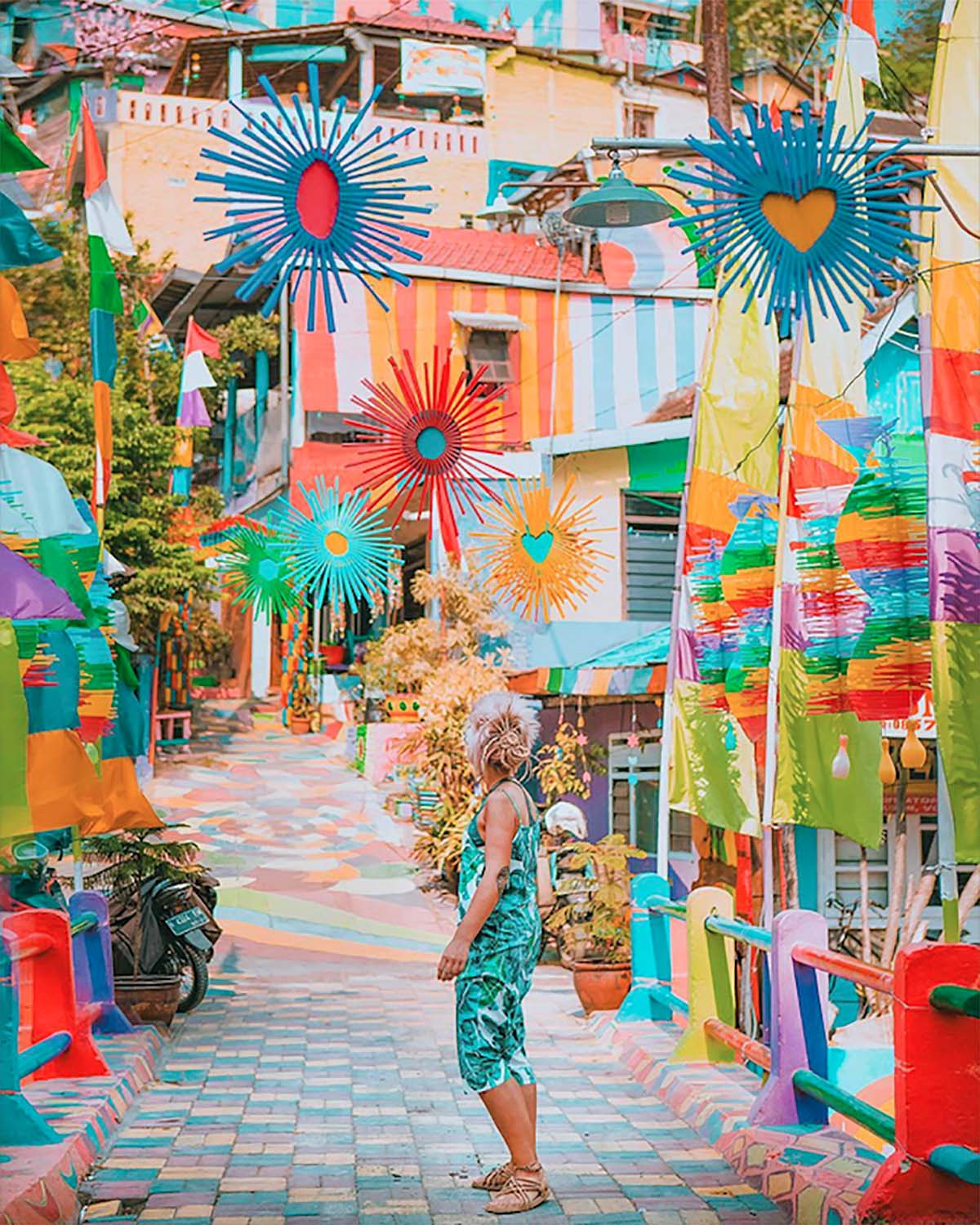
Image by 7vensuns
KampungBrintik, now is more popular by the name KampungPelangi, situated nearby PasarBungaKalisari, Semarang, was not very well organized settlement and deserted before the government takes over for a renovation environment project.
The project itself was actually intended to rebuild the facility of PasarBungaKalisrari. With a hope that the renovation will attract more visitors and gain the tourism of its area, the local government then turned that dirty settlement into a colorful area.
So then it will gain the aesthetic of the settlement and become one of the most attracting sites to visit. And now that the area is clean and neat, the visitors tend to spend more time in the settlement instead. It is an exquisite place for taking pictures and refreshing. Go ahead and take an awesome photograph of yours there!
15 | Gedung Lawang Sewu

LawangSewu (Thousand Doors) is a landmark in Semarang, Central Java. It was designed by Cosman Citroen, from the firm of J.F. Klinkhamer and B.J Quendag. The name comes from its design, with numerous doors and arcs. The complex consists of several buildings.
Two main ones called A and B, and the other two smaller ones called C and D. There was also an underground tunnel that connecting A building to several other sites in the city, including the governor’s mansion and the harbor. Back in 1942, the Japanese army took over this place and turned the basement of B building into a prison, with several executions taking places there.
It said to be a haunted site, with many tourists come and visit to see the ghosts. Among the ghosts reported to inhabit the establishments are a Dutch woman who committed suicide inside and also “headless ghouls”. So, if you are interested in historical-haunted place, this site would be a perfect choice to visit!
Suggested for you

5 Traditional Dishes in Solo That Are Simply Irresistible
Load More
❯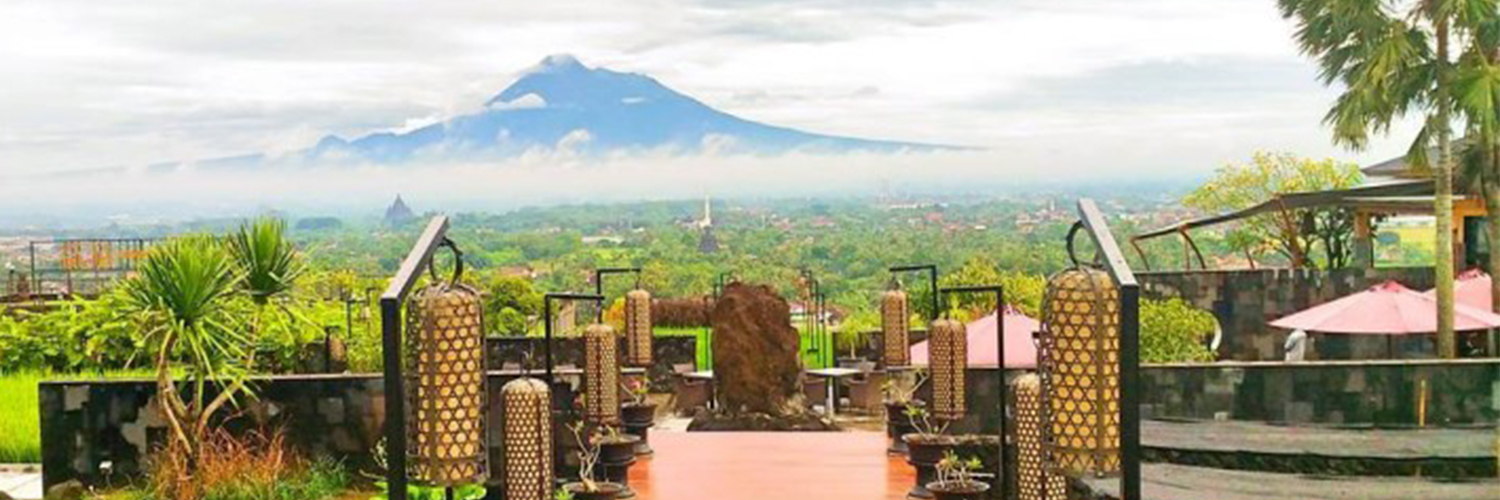
Refreshing Retreat to Enjoy Near Prambanan Yogyakarta
Load More
❯
Try These Fun Ideas to Explore Yogyakarta in a Day
Load More
❯
7 Ways to Celebrate Love in Semarang City
Load More
❯
Semarang Attractions not to be missed
Load More
❯